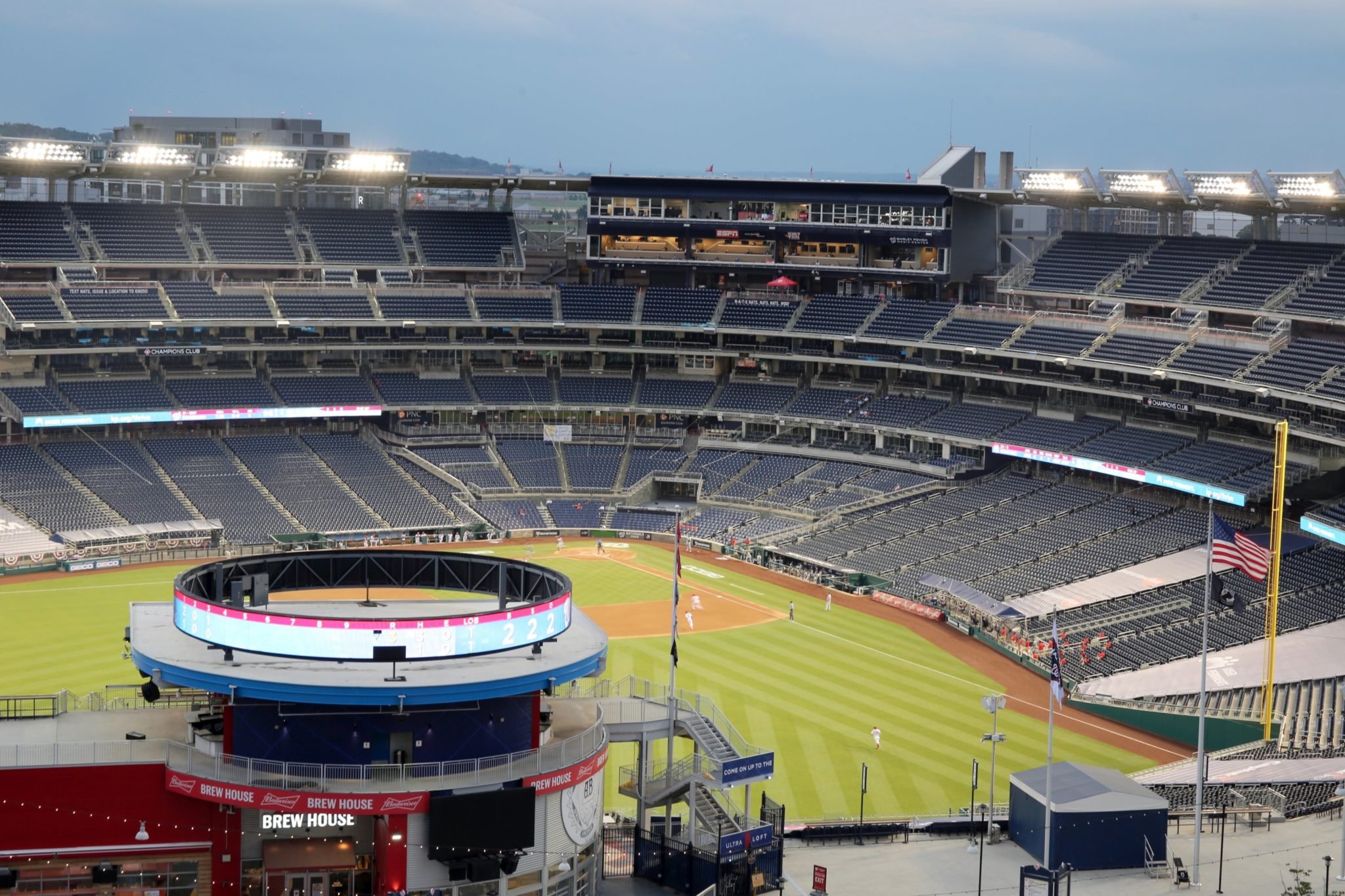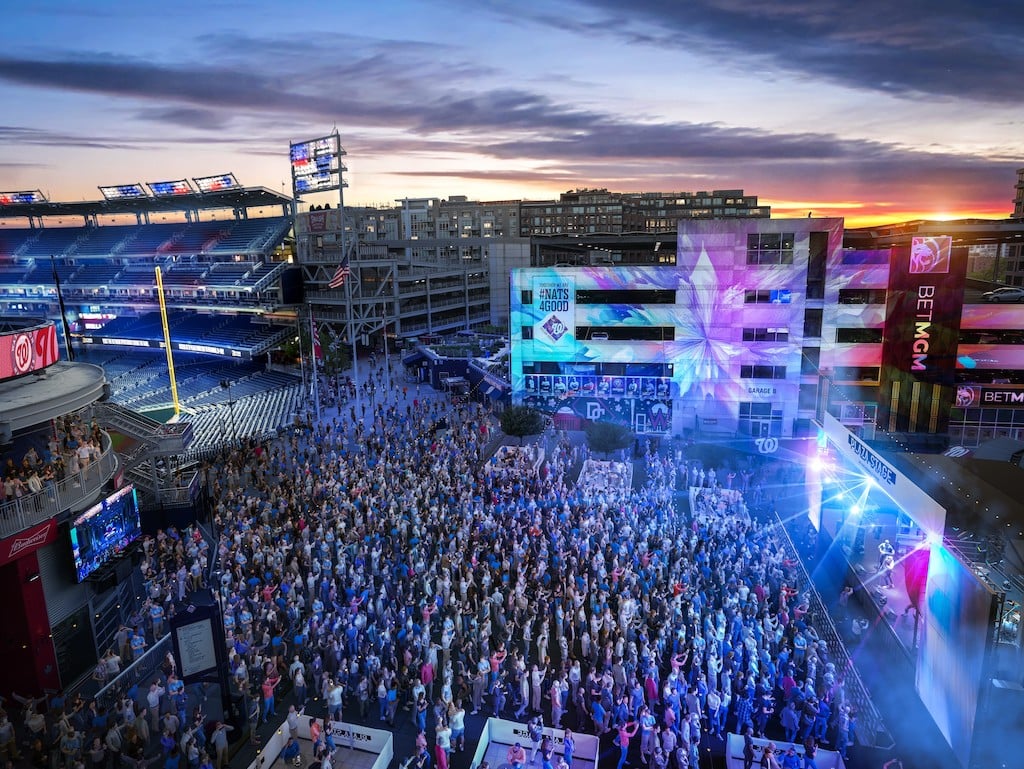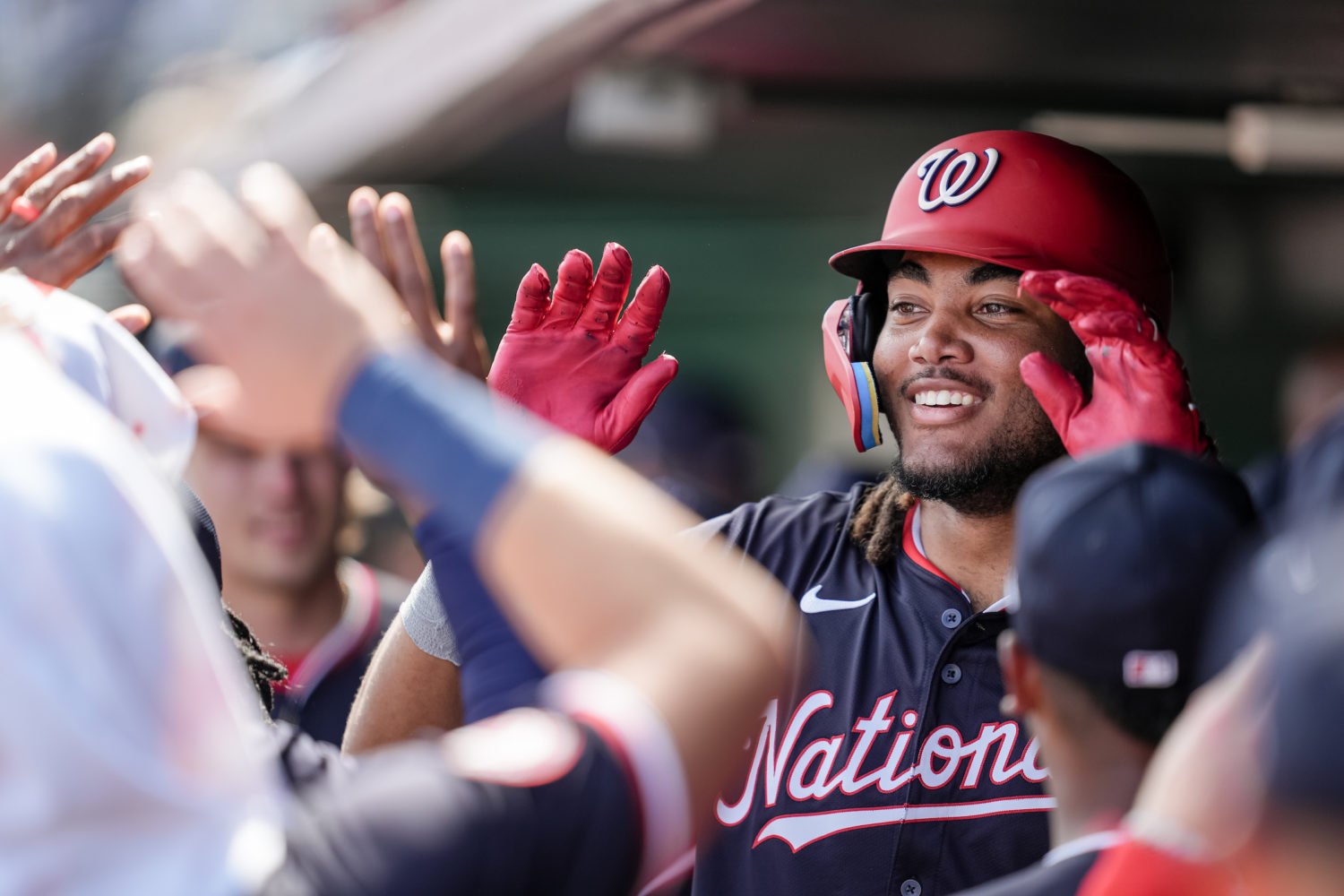After a 2020 season during which Major League Baseball games were played in fan-less stadiums, it’s great that about 10,000 spectators (25 percent of the park’s capacity) are now allowed into Nationals Park for each home game—with the hope that capacity may increase as conditions allow.
Reopening to fans, of course, took a lot of planning and the implementation of new safety protocols. Before the season started, the Nats announced all the changes fans would see—not just having to wear masks and sit in socially distanced pods, but also adjustments in the way visitors order and pay for food, and new restrictions on bags.
Still, not all fans are aware of the new rules. Even those who are may be surprised at how the experience actually plays out when there. I went to the April 19 game between the Nats and the St. Louis Cardinals (an unfortunate 12-5 romp by the Cards), and although I was ecstatic to be watching live baseball in-person and I was prepared for the experience to be different—like so much else in the time of Covid—here’s what I wish I’d known before I went.
- While I knew that patrons were no longer allowed to bring in bags bigger than a clutch (5” x 7” x 3/4”)—unless it’s a diaper bag or an ADA/medical bag—I wasn’t prepared to have to empty everything out of my pockets. When the Nats announced the new no-bag policy, the stated reason for it was that a bag search meant more touchpoints between security personnel at the gate and fans. It made every bit of sense to cut down that exposure and speed up the process. But when I got to the gate with my pod, we were asked to remove everything from our pockets. Not just keys and phones and other things that could trigger the metal detector, but also gloves, hats, wallets, hand sanitizer—everything we had stuffed in our pockets because we weren’t allowed in with a bag. The process took twice as long as a normal bag check used to take. A Nationals spokesperson later told me that fans should only to have to take out of their pockets anything that would set off the metal detector. My advice: In case you get a zealous security employee, be prepared to remove everything from your pockets as you approach the gate.
- Although I knew I’d have to use my phone to order and pay for any food and drink, I should have been more prepared. Another major change at the stadium is that at some of the food stalls, you can’t just walk up, tell the person behind the counter what you want, and pay and be on your way. At some of the kiosks, you have to order through your phone. To buy a beer at District Drafts, for example, I had to scan the QR code at the kiosk to place my order. (Don’t use a QR code reader, as I tried—just scan with your camera.) Sound simple? It probably is once you get used to it. But it took me several tries to place an order. A few other patrons attempting to buy a beer seemed similarly confounded—standing together at the kiosk, several of us got help from the person who would ultimately pour the drafts. If the idea was to eliminate people gathering in a clump, or getting too close to the server, it was not working in this instance. When I finally ordered successfully, I showed the receipt on my screen to the server, who poured my beer. The whole process took about 10 minutes—probably three times longer than in pre-Covid days—and by the time I got that beer, I needed it. “Like you, our game day staff are all adapting to new protocols put in place because of the pandemic, so please have patience with us as we continue to adapt to the times,” said a Nats spokesperson later. “We’re hopeful that as guests become used to this new way of ordering they’ll be in and out of the queue faster than using another form of payment.”
- Speaking of using your phone to order and pay for food, you’ll need to download the Ballpark app. I already had the app, but having not been to a game in a year and a half, I had just $13 in eCash on the app, leftover from 2019. I tried to use Apple Pay when ordering beer, but it wouldn’t take for some reason. I was able to load more eCash on the spot, but it was one more thing that slowed down the ordering process. My advice: Not only download the app, but also set up various payment methods ahead of time. Although, good news if you need to do it at the stadium: With just 10,000 fans, WiFi was easily accessible and speedy.
- Don’t assume you won’t wait in a line for food. With so few fans in the stands, I figured it was a great time to hit Shake Shack—famous for its inning-plus lines in normal times. While still in my seat, I used mobile ordering for my double-patty burger, to save time (mobile ordering for food, done on the Ballpark app vs. a QR code, was easy). Then I worried the order would be ready before I could get there from my section, just beyond first base. Walking past all the sausage and pizza and hot dog vendors, there was not a single line for food. But as I approached Shake Shack I realized some things never change—there was a fairly long line of people who hadn’t pre-ordered (at the “permanent” concession stands vs. “portable” kiosks like District Drafts, you can walk up as usual to place an order, and use contactless payment). In the separate mobile-ordering pick-up line there were about 10 people in front of me. Still, no matter: Back in my seat, hot burger and cold beer in hand, I watched the Nats plate a couple of runs, smiled when I saw the World Series Champions 2019 sign in the outfield, and forgot about the food line and security process and beer hiccups. It didn’t even hurt (much) that the Nats lost. The point was being at a game.



















